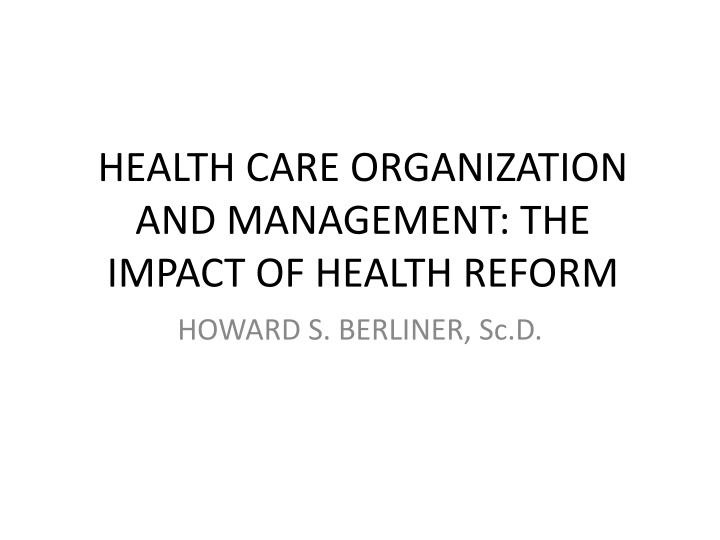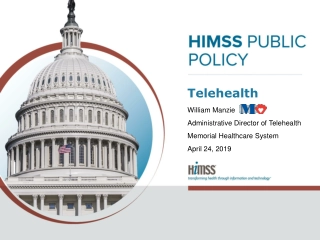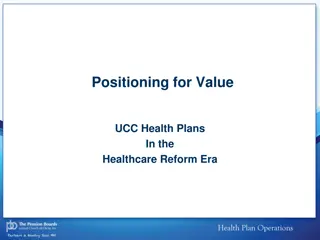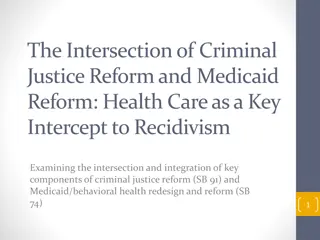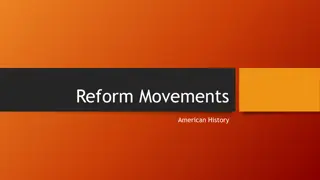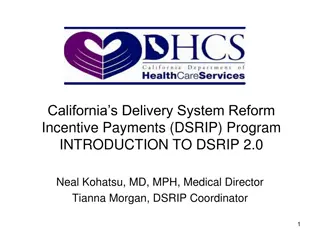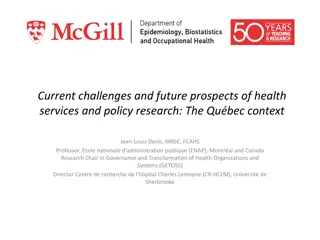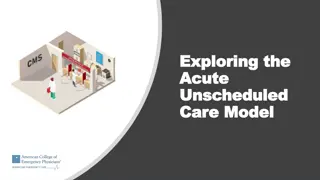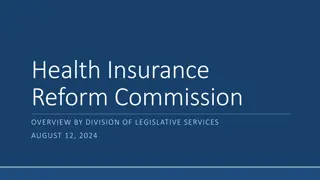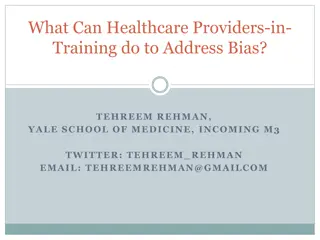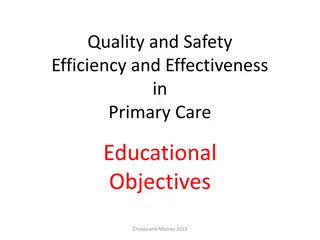Impact of Health Reform: Addressing Healthcare Management Challenges
This insightful content delves into the impact of health reform on healthcare organizations and management, highlighting issues such as rising costs, disparities, uninsured populations, and quality of care. Key topics include healthcare expenditure comparisons, uninsured statistics, disparities in care access, and the shift towards value-based purchasing. Explore the evolving landscape of healthcare management in the face of reform initiatives.
Download Presentation

Please find below an Image/Link to download the presentation.
The content on the website is provided AS IS for your information and personal use only. It may not be sold, licensed, or shared on other websites without obtaining consent from the author.If you encounter any issues during the download, it is possible that the publisher has removed the file from their server.
You are allowed to download the files provided on this website for personal or commercial use, subject to the condition that they are used lawfully. All files are the property of their respective owners.
The content on the website is provided AS IS for your information and personal use only. It may not be sold, licensed, or shared on other websites without obtaining consent from the author.
E N D
Presentation Transcript
HEALTH CARE ORGANIZATION AND MANAGEMENT: THE IMPACT OF HEALTH REFORM HOWARD S. BERLINER, Sc.D.
ISSUES IN U.S. HEALTH CARE COST UNINSURED/ UNDER-INSURED DISPARITIES FRAYING TIE TO EMPLOYMENT ROLE OF THE GOVERNMENT
COST OVERALL COST COMPARED TO OTHER COUNTRIES COST OF INSURANCE COST OF HOSPITALS ELIZABETH ROSENTHAL (NYT); BITTER PILL (BRILL) COST OF DRUGS HEP C SOLVADI $84,000/12 WEEKS CANCER DRUGS SHIFT OF COSTS ONTO THE INSURED
Per Capita Total Current Health Care Expenditures, U.S. and Selected Countries, 2010 ^ 2009 data Notes: Amounts in U.S.$ Purchasing Power Parity, see www.oecd.org/std/ppp; includes only countries over $2,500. OECD defines Total Current Expenditures on Health as the sum of expenditures on personal health care, preventive and public health services, and health administration and health insurance; it excludes investment. Source: Organisation for Economic Co-operation and Development. OECD Health Data: Health Expenditures and Financing , OECD Health Statistics Data from internet subscription database. http://www.oecd-library.org, data accessed on 08/23/12.
UNINSURED NUMBER REDUCED DUE TO ACA STILL 25-30 MILLION WITHOUT INSURANCE STATES NOT DOING MEDICAID EXPANSION THE UNDOCUMENTED 8-10,000,000 EXPLICITLY UNCOVERED GROWTH OF THE UNDER-INSURED GROWTH OF COPAYS AND DEDUCTABLES INCREASING PROBLEM FOR MD S AND HOSPITALS
DISPARITIES RACIAL, ETHNIC, GENDER, GEOGRAPHIC, AGE DIFFERENCES IN: PREVALENCE RATES ACCESS TO AND AVAILABILITY OF CARE TREATMENT LOCATIONS PROCESS OF CARE OUTCOMES
VALUE BASED PURCHASING AND QUALITY OF CARE MEDICARE PAYMENTS WILL INCREASINGLY BE BASED ON OUTCOME MEASURES HOSPITALS IN LOW SOCIOECONOMIC AREAS AT RISK READMISSIONS POLICIES CAN/SHOULD HEALTH PAYMENTS BE BASED ON QUALITY METRICS?
FRAYING TIE TO EMPLOYMENT EMPLOYERS WITH OVER 50 FULL TIME WORKERS REQUIRED TO PROVIDE INSURANCE OR PAY A FINE ( BUT ONLY FOR WORKERS NOT DEPENDENTS) INCREASING NUMBER OF JOBS IN SMALL BUSINESS, SELF-EMPLOYED, CONTINGENT EMPLOYED WHAT IS THE VALUE OF EMPLOYER-BASED INSURANCE?
ROLE OF THE GOVERNMENT WHO SHOULD BE RESPONSIBLE FOR PROVISION OF SERVICES AND PAYMENT FOR CARE? INDIVIDUAL EMPLOYER INSURANCE COMPANY GOVERNMENT
CURRENT ISSUES IS INSURANCE THE ANSWER? ACA ISSUES: KING v. BURWELL REPEAL EFFORTS MEDICAID PRIVATIZATION PLANS CHANGES TO THE LAW WILL ANOTHER PRESIDENT OR CONGRESS GET INVOLVED WITH HEALTH CARE IN THE NEAR FUTURE?
Concentration of Health Care Spending in the U.S. Population, 2009 Percent of Total Health Care Spending ( $51,951) ( $17,402) ( $9,570) ( $6,343) ( $4,586) ( $851) (<$851) Note: Dollar amounts in parentheses are the annual expenses per person in each percentile. Population is the civilian noninstitutionalized population, including those without any health care spending. Health care spending is total payments from all sources (including direct payments from individuals and families, private insurance, Medicare, Medicaid, and miscellaneous other sources) to hospitals, physicians, other providers (including dental care), and pharmacies; health insurance premiums are not included. Source: Kaiser Family Foundation calculations using data from U.S. Department of Health and Human Services, Agency for Healthcare Research and Quality, Medical Expenditure Panel Survey (MEPS), Household Component, 2009.
